NREL Cultivates a Fresh Crop of Rural Transportation Options
On-Demand Transit Systems Increase Ridership, Travel Speed, and Affordability in Communities With Low Population Densities
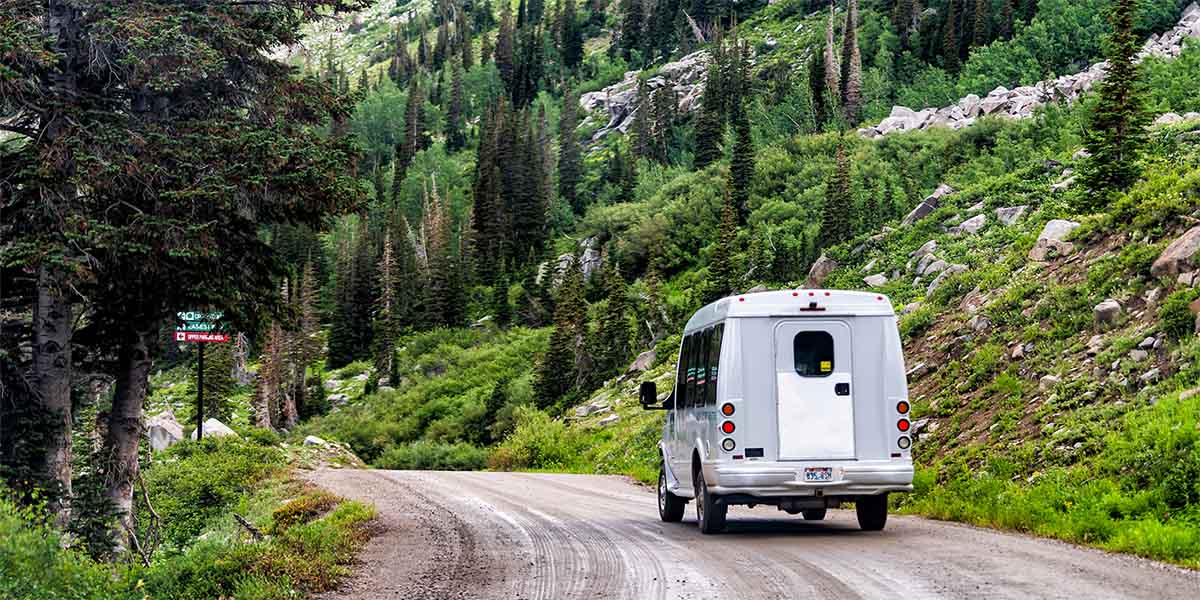
NREL is helping communities bridge the mobility divide with on-demand transit systems in areas with low population densities and little in the way of public transit. Photo from iStock
Asked to describe transportation in rural areas, you might picture a rancher kicking up the dust of a long country road with a pickup truck or a farmer using a tractor to harvest acres of crops. However, today's "rural" mobility challenges extend far beyond pasture lands. People in all types of communities―ranging from small towns, remote villages, and exurbs on the edge of large metropolitan areas―are spread across many miles, with limited options to reach workplaces, medical facilities, or grocery stores.
The U.S. Department of Energy's (DOE's) National Renewable Energy Laboratory (NREL) is working to bridge the mobility divide in areas with low population densities and little in the way of public transit. On-demand transit (ODT) solutions established by local governments are making it possible for more residents to affordably and conveniently get to jobs, appointments, and more.
"As on-demand options have been rolled out in more communities, it's becoming clear that they can effectively meet the needs of underserved populations in a range of settings," said NREL Rural Mobility Project Lead and Transportation Behavior Analyst Andy Duvall. "This increased mobility has made a dramatic difference in the lives of people at both ends of the age spectrum, who are either too young or too old to drive themselves safely."
Similar to Uber and Lyft, these ODT systems combine ride-hailing software with point-to-point ride services to offer lower operating costs and more flexible services than those found with more traditional transit systems with fixed schedules and routes. ODT rides can be hailed through smartphone apps, websites, or by phone, and payment can be made with cash or by debit, credit, or reloadable smart cards. This allows even individuals without cell phones or bank accounts to take advantage of services.
Impressive Cuts in Cost, Travel Time, and Emissions
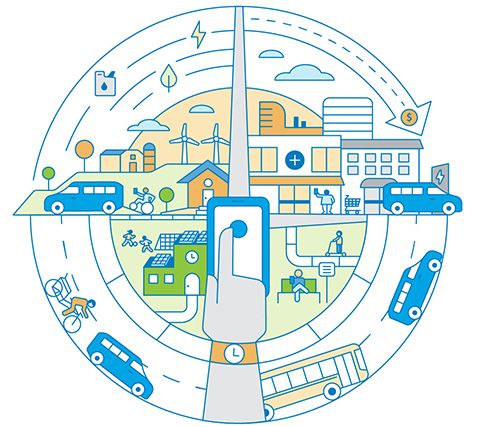
On-demand transit offers a customized, accessible, and efficient mobility solution. Graphic by Cameron Nelson, NREL
In some instances, NREL researchers have found that replacing fixed-route bus systems with ODT has boosted ridership by up to 40%, slashed operating costs as much as 30% per ride, and sped up average travel times by 21%.
In addition to service and budget benefits, some of these ODT systems have also cut emissions by more than 60% per rider by switching from large but underutilized diesel buses to smaller gas or electric vehicles and reducing the number of trips taken by single-occupancy vehicles. It is estimated that simply replacing fixed-route bus systems with on-demand services in areas with low population density could diminish U.S. carbon dioxide (CO2) emissions by around 1.7 million metric tons annually―the equivalent of removing approximately 367,000 internal-combustion-engine cars from the road for a year.
NREL and its partners are advising rural communities of all types and sizes on technology and system designs, as well as gathering and analyzing data to confirm that operations are viable. Previous NREL rural mobility projects applied the ODT model to serving communities of less than 50,000 residents on routes within town limits, covering just 28 square miles. Now, the team is taking on larger service areas traversing more than 100 square miles and populations close to half a million.
"These new on-demand services typically consider right-sizing to match demand, using smaller six-seat shuttle buses to create new valued services and mobility options," said NREL Senior Researcher and Project Lead Josh Sperling. "We've found ODT solutions can reduce costs while increasing access to opportunities, social connection, and travel-time reliability."
Recent NREL rural ODT collaborations and case studies have spanned U.S. regions coast to coast, plus communities in Puerto Rico and Canada.
Big Transportation Challenges Close to Large Cities
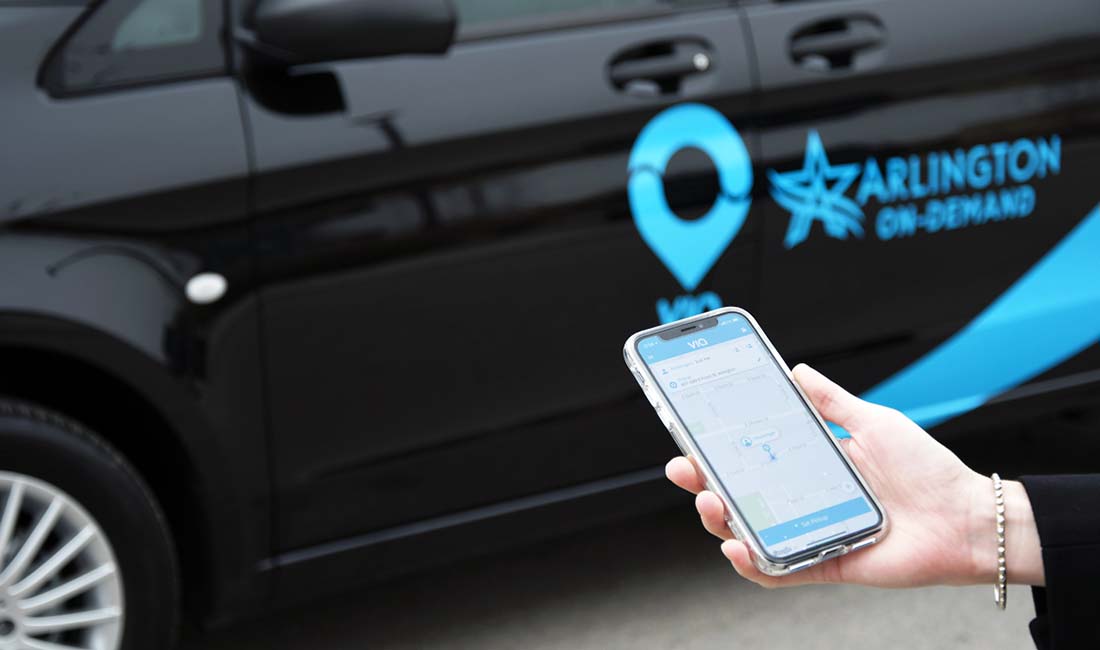
Arlington, Texas, and other communities with populations spread out over large areas are turning to on-demand transit models that allow residents to hail rides using smartphones. Photo by Via
For some areas on the outskirts of big cities, proximity that seems like an advantage translates into large transportation challenges. An analysis of Arlington, Texas, developed by NREL, provides a model for evaluating the impacts of ODT in far-flung regions of metropolitan development, showing how these systems can improve transportation access and speed.
"Years of voting down measures to establish a traditional fixed-route bus system made Arlington one of the largest cities in the country without mass transit, even though it's just 30 minutes from Dallas and Fort Worth," said NREL Mobility Systems Project Leader Stan Young. "Today, residents are leading the nation in embracing a new form of public mobility."
In this city of nearly 400, 000 people spread across about 100 square miles, disadvantaged communities not only lacked public transit but also tended to be located in areas short on walkability. This led 81% of workers—those who owned cars—to drive to work alone. A poverty rate of 14% and an unemployment rate of 5.4%, both higher than national averages, put automobile ownership out of reach for many Arlington residents.
NREL researchers assessed the new Arlington On-Demand system, comparing its effectiveness with that of other transportation modes, including personal vehicles, private ride-sharing, and bicycling. The analysis found the ODT system offered a cost-effective alternative to higher-priced private ride-sharing services, delivering the greatest benefits to communities with low rates of car ownership.
Spanning almost the entire city, the system operates 75 six-passenger vans that serve "virtual bus stops" within two blocks of any requested pickup or drop-off point. Since its 2017 launch, Arlington's ODT system has provided more than 1.8 million rides. Ridership closely mirrors the city's population in terms of race and earnings, with 66% of both ODT users and residents who are non-white, as well as 66% who have a household income below $25,000. An overwhelming 77% majority of the system's riders do not own a car, nearly 10 times the national average of 8.4%.
North of the Border, North of 40% Increases in Ridership
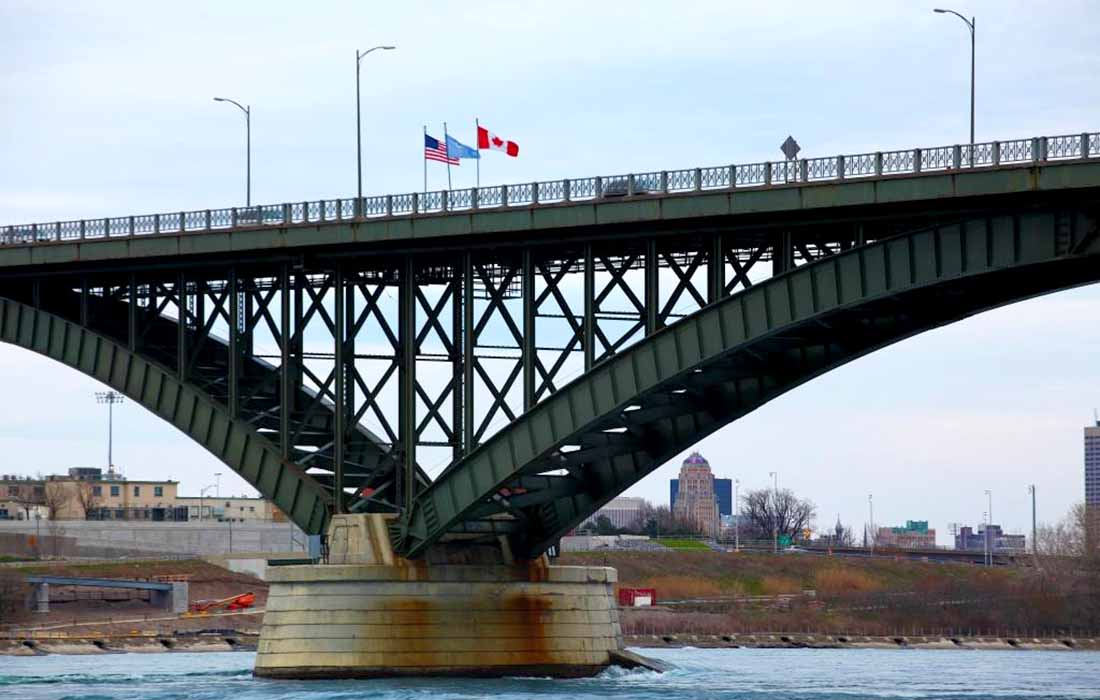
Just across the Canadian border, the small city of Fort Erie saw a 40% jump in ridership when it switched from a traditional fixed-route bus system to on-demand shuttles. Photo from iStock
Two other recent NREL analyses assessed the efficacy of similar solutions deployed by the smaller Canadian communities of Fort Erie and Innisfil, Ontario municipalities each with populations of 30,000–40,000 and located on the edge of larger metropolitan areas (Buffalo, New York, and Toronto, Ontario, respectively). Both regions reflect the sprawling development and heavy reliance on private vehicles common among many U.S. communities, with little funding available for public transit. The cities' new systems benefit riders and operators through ODT approaches.
When Fort Erie switched from its previous fixed-route bus system to on-demand service, the city considered partnerships with ride-hailing companies but ultimately opted for a local solution to ensure dedicated service and prevent reliability issues. Innisfil, however, decided to bring Uber on as an operational partner after weighing pros and cons against those of an independent ODT and a more traditional fixed-route bus system.
"We found both ODT services have significantly improved public mobility access and satisfaction, with rider numbers three to four times higher than that estimated for proposed traditional fixed-route bus systems," Duvall said. "In fact, Fort Erie ridership has now eclipsed pre-pandemic levels by a full 40%."
Fort Erie replaced three fixed bus routes with a flexible ODT model that serves the community's entire 170 square miles, with designated stops in population centers and curb-to-curb service in outlying areas. Across Innisfil's approximately 100 square miles, Uber offers door-to-door transportation more common to private on-demand services.
Both cities' operating costs are nearly 30% lower than those of proposed or previously operating fixed-route systems, thanks to an overall more efficient service model. Fort Erie realizes additional savings from the use of smaller minivans, and Innisfil's Uber partnership has averted the expense and overhead of fleet vehicle purchase and maintenance.
"The ODT systems' environmental benefits could be considered even more notable than its effects on the economy and mobility," Young said. "Fort Erie's on-demand service using gasoline rather than diesel vehicles has reduced CO2 emissions by 63% per ride, as well as cutting noise pollution."
While cumulative emissions from Innisfil Transit trips are marginally higher than those from personal vehicles, CO2 emissions are still at least 14% lower than projected for fixed-route diesel buses.
A final, somewhat surprising benefit of the ODT systems surfaced in the aftermath of COVID-19. The pandemic caused public transit ridership in some cities to drop by as much as 90%. Innisfil Transit's partnership with Uber allowed for more responsive service adjustments and less financial burden on the system as ridership slowly rebounded.
A Key to Mobility in the Keystone State
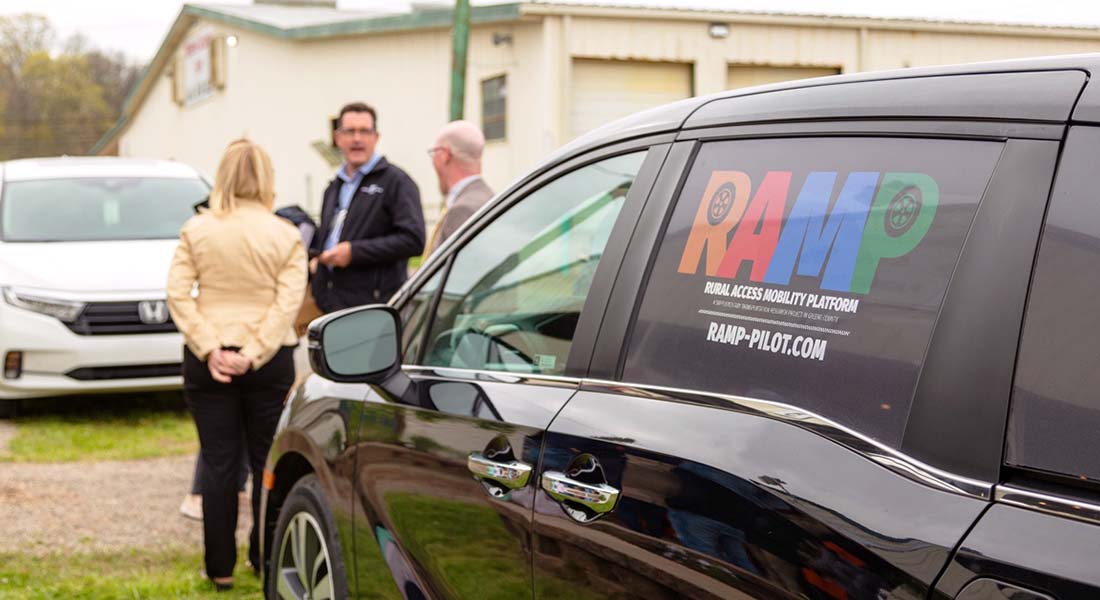
The Rural Access Mobility Platform connects Greene County, Pennsylvania, residents with rides to health care appointments and other services. Photo by Paul Hicks, Waynesburg University
NREL researchers have acted as advisors, conveners, and technical experts on numerous other DOE-funded projects designed to improve mobility services in rural areas of five states. Recently, the laboratory partnered on an initiative led by Carnegie Mellon University (CMU) in Greene County, Pennsylvania, a rural area with a population of 39,000 outside of Pittsburgh.
The CMU-NREL team codesigned frameworks to evaluate energy efficiency, cost, and performance of a public mobility system designed to address the community's unmet travel needs identified by surveys, system-level traffic data, and behavioral and user satisfaction data from riders of existing services.
Results of simulations examining the potential of different combinations of shuttle and ride-hailing services indicated that using shuttles with ride-hailing companies improved performance by 7.7%, reduced operating costs by 6%, and decreased travel wait times by up to 40%.
The on-demand Rural Access Mobility Platform (RAMP) service was developed by researchers from CMU based on community input and analysis findings. It combines a fixed-route shuttle to residents' two most popular destinations with a first-mile/last-mile connector service to on-request stops throughout the county for essential trips. Although the shuttle has set schedules and routes, it is flexible in terms of which stops it makes.
Lessons from the RAMP program are now being applied to a more ambitious multimodal project that covers the wider Appalachian region. DOE has funded similar projects in California, Ohio, Oregon, and Texas, and NREL cohosted a workshop at Carnegie Mellon in September 2024 for project awardees to exchange ideas and success stories.
Solutions for Remote Locations in the Near Future
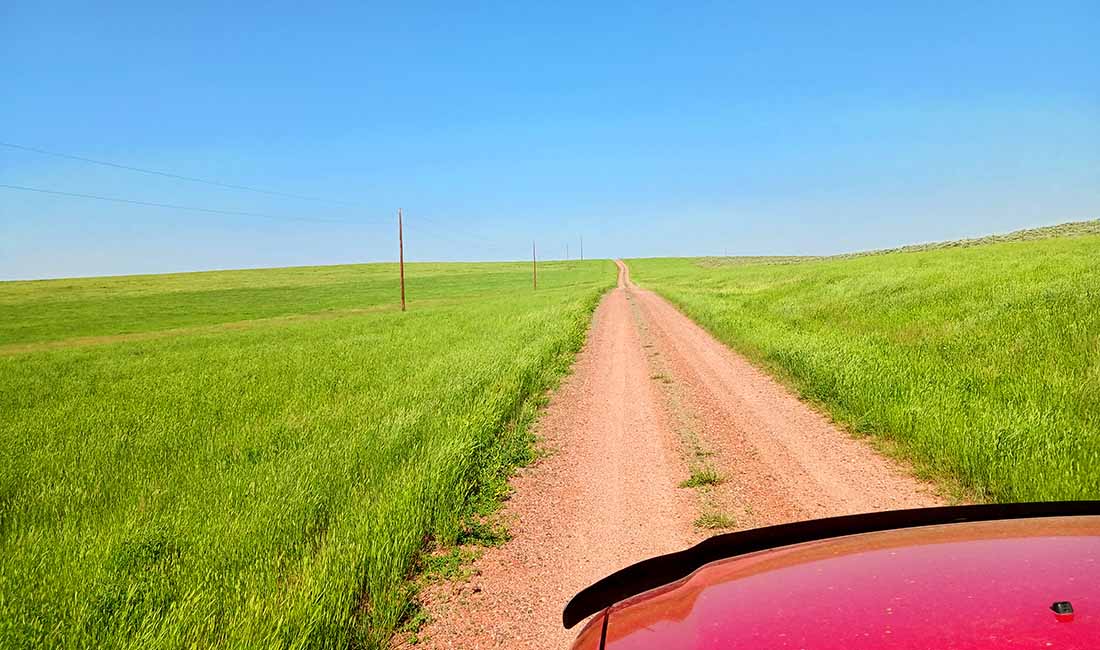
It is not just stretches of farm country, such as these Wyoming ranchlands, that need rural mobility solutions. Similar issues are faced by communities with low population densities in all types of settings. Photo by Andy Duvall, NREL
While these existing ODT solutions provide valuable models for planners and transit agencies, NREL researchers continue to look for new ways to refine operations. They are exploring opportunities to improve the performance, affordability, and environmental impact of ODT systems, as well as develop new transportation solutions tailored to each rural community's needs.
Most ODT systems currently rely on gasoline-powered shuttle buses due to the limited commercial availability of electric vehicles and charging networks in non-urban areas. Eventually switching to hybrid or fully electric vehicles, along with strategies to avoid rider no-shows, can trim costs and emissions even more.
With fluctuations in population, ridership, and demand patterns, scalability also remains a key consideration. Many communities have yet to offer ODT service seven days a week.
Remote locations with extreme environments present even greater challenges, and NREL is looking beyond ODT systems to find solutions for these areas. Microgrids can capture and store energy from renewable sources and make electricity available without connecting to utilities, supporting recovery in the aftermath of hurricanes. Additionally, shared e-bikes and scooters that draw power from these installations can provide alternatives to cars.
In Puerto Rico, NREL recently collaborated on an associated project with rural communities and university partners to explore how the performance and resilience of these microgrids could be optimized through strategic siting.
"Sure, it might seem obvious that these solutions can provide critical services in emergencies," Duvall said. "The question we're looking at is what will encourage people to use these power and mobility hubs? We need to figure out more than the right microgrid locations and how much electricity it'll take to charge vehicles and keep the lights on."
For example, comparable solutions using electrified models of vehicles such as snowmobiles and all-terrain vehicles (ATVs) more suited to cold, icy conditions could also be considered for remote areas of Alaska.
Other NREL projects underway in three very different settings are looking at related solutions. Communities in Upstate New York, at the gateway to Yellowstone National Park in Wyoming, and in a beach town north of San Diego, California, are considering combinations of ODT, e-bikes, and scooters as tourist mobility options as well as for locals' work commutes.
The NREL team is also engaging with the Joint Office of Energy and Transportation's ChargeX Consortium, DOE's Clean Energy to Communities program, and other national and regional electrification initiatives to factor rural needs into plans to build out charging networks.
"Whether it's in the middle of this country, on a Caribbean island, or across the vast frozen expanse of Alaska, all of these rural communities face unique challenges to reliable, efficient mobility," Young said. "We're working with partners in these places to address issues faced by local communities―and find new ways to help all kinds of folks nationwide get wherever they want to go."
Rural America: Anything But Typical Communities and Mobility Issues
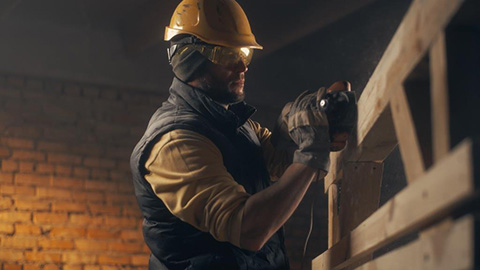
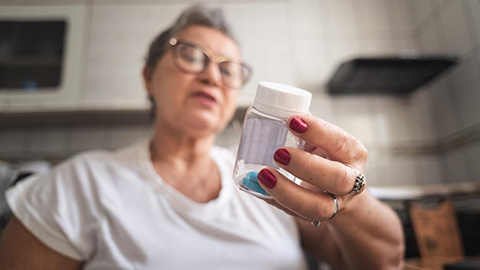
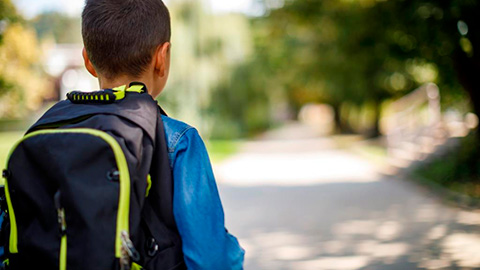
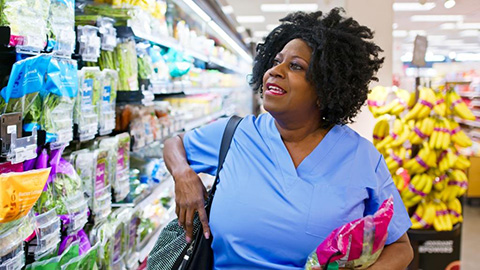
In communities without transit options, it often takes large amounts of time and money to reach work, medical appointments, school, and stores. Photos from iStock
Approximately one in five Americans lives in what is considered a rural area. That said, the U.S. government has at least 15 different official definitions of the word "rural"—ranging from remote areas on the perimeter of national parks or metropolitan areas to retirement villages and college towns that experience seasonal population spikes with concentrated demographics, regions with limited sources of economic support, traditional main street communities, and Native American Tribal lands—making experiences in these areas anything but typical.
More than 1 million households in these areas classified as rural do not have cars, lack affordable transit options, and face long drives to workplaces, medical facilities, retail centers, and other services. Limited and unreliable internet and cell phone service can also pose difficulties in accessing transportation options.
Not having a means of transportation profoundly affects quality of life. The distance to workplaces establishes a vicious circle of not being able to get to a high-paying job without a car and not being able to afford a car without well-compensated work. Adults over the age of 65 account for an estimated 20% of rural households, and those who do not drive make 15% fewer doctors' appointments, take 59% less shopping or dining excursions, and visit with friends and family 65% less often than drivers the same age. The approximately one-third of adults in rural communities who live with disabilities, along with school-aged children and their caregivers, face similar impediments to healthcare, education, and general activities necessary to survival.
Despite the acute need, many rural areas lack the funds and volume of demand needed to support a traditional public transportation system. Compounding this, plummeting ridership during the COVID-19 pandemic resulted in a $39.3 billion deficit for U.S. transit agencies, making less state and federal funding available to these smaller communities.
The National Renewable Energy Laboratory is working to bridge the mobility divide in these areas with low population densities and little in the way of public transit.
Learn more about NREL's sustainable transportation and mobility research and its specific focus on on-demand transit including the types of communities that benefit from these efforts. And sign up for NREL's quarterly transportation and mobility research newsletter, Sustainable Mobility Matters, to stay current on the latest news.
This article has been updated to reflect editorial changes made after its original publication.
Last Updated May 28, 2025
